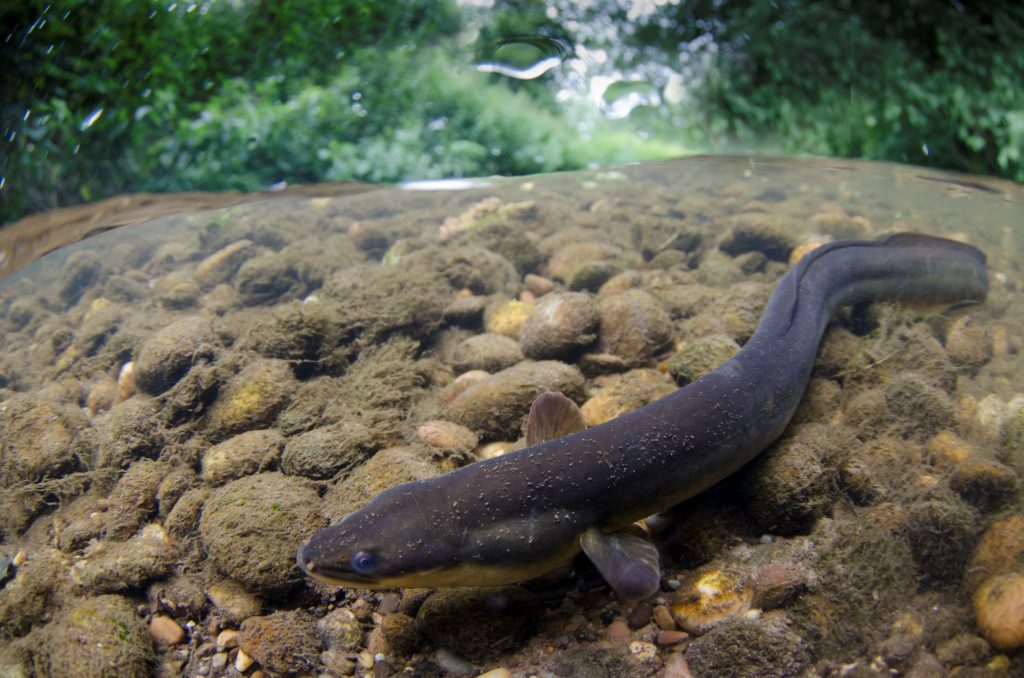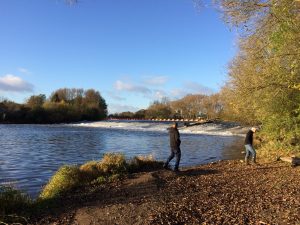Characteristics
The European eel is very unusual in appearance. They have an unmistakably long and slim ‘snake-like’ body with very long dorsal and anal fins that meet at the tip of their tails. Eels are migratory fish and they return to the sea when they become adults to reproduce in the Sargasso Sea just north of the Caribbean. They can still grow to lengths of over 1m in British freshwater. As well as being very long, they are also very powerful fish and create a lot of slime much to the dislike of anglers. If eels become stranded, they have been known to ‘slither’ over land during wet mornings. Some species of eels can live for up to 100 years in the event of being unable to complete their spawning migration, but more typically the European eel spends between 7 and 25 years in freshwater.
Diet
In freshwater eels are very important ecologically as they scavenge on the decaying remains of mainly fish, but also mammals and birds. They will also prey on invertebrates and other fish amongst the substrate of lakes and rivers. Small eels are often caught by anglers as they are well known to be ‘unfussy’ with their food and will take most meaty baits. Anglers targeting large eels will often use dead smelly fish, like smelt, as bait. They must be returned to the water, whereas in times gone by many would be taken for the pot. Smaller eels are an important food source for birds like bittern, heron and egrets. They are particularly favoured by otters because of their high fat content.




